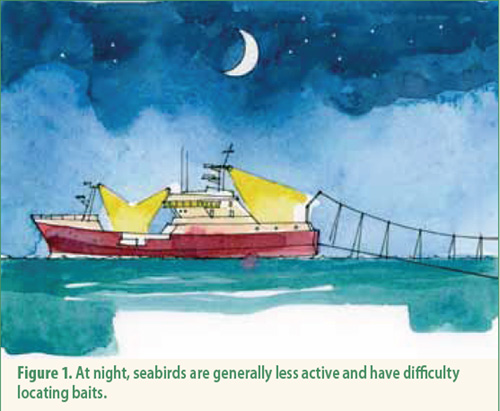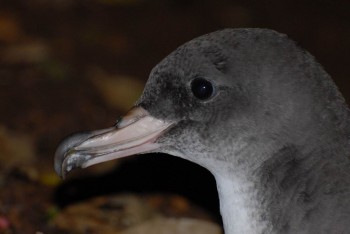The Flesh-footed Shearwater Ardenna carnepeis has been categorised as Near Threatened in the just-released 2016 list of threatened birds by BirdLife International.
The up-listing follows a review of the bird’s conservation status and call for comments via the BirdLife International Threatened Seabird Forum (click here for the texts).
The uplisting justification follows: “Despite the poor historical records and the current lack of data across all populations to assess the global population, there is now enough evidence to confirm that its population has been strongly affected by the fisheries operating in Australia and the population on Lord Howe and Sandy Island (Australia) and Lady Alice Island (New Zealand) is declining. Based on such an evidence, it seems reasonable to suspect that the population has declined by at least 20-30% over three generations and thus the species has been uplisted to Near Threatened.”
One forum commentary stated “The species warrants uplisting to Near Threatened, on the basis of the combined set of demographic and population information, most of which is unfavourable, although with high uncertainty associated with most estimates, and the detailed information about threats to the population that are quantified through fisheries observer work.”
The Flesh-footed Shearwater was identified as a potential candidate for listing within the Agreement in a 2008 publication. It breeds within the territories of Australia, France and New Zealand, all Parties to ACAP. Two other shearwaters identified as candidate species in 2008, the Critically Endangered Balearic Puffinus mauretanicus and the Vulnerable Pink-footed A. creatopus have subsequently been listed within the Agreement.

Flesh-footed Shearwater, photograph by Barry Baker
Selected Literature:
Baker, G.B. and Wise, B.S. 2005. The impact of pelagic longline fishing on the Flesh-footed Shearwater Puffinus carneipes in Eastern Australia. Biological Conservation 126: 306-316.
Barbraud, C., Booth, A., Taylor, G.A., Waugh, S.M., 2014. Survivorship in Flesh-footed Shearwater Puffinus carneipes at two sites in northern New Zealand. Marine Ornithology 42: 91-97.
Cooper, J. & Baker, G.B. 2008. Identifying candidate species for inclusion within the Agreement on the Conservation of Albatrosses and Petrels. Marine Ornithology 36: 1-8.
Lavers, J.L. 2015. Population status and threats to Flesh-footed Shearwaters (Puffinus carneipes) in South and Western Australia. ICES Journal of Marine Science 72: 316-327.
Priddel, D., Carlile, N., Fullagar, P., Hutton, I. and O’Neill, L. 2006. Decline in the distribution and abundance of Flesh-footed Shearwaters (Puffinus carneipes) on Lord Howe Island, Australia. Biological Conservation 128: 412-424.
Waugh, S.M., Tennyson, A.J.D., Taylor, G.A. & Wilson, K.-J. 2013. Population sizes of shearwaters (Puffinus spp.) breeding in New Zealand, with recommendations for monitoring. Tuhinga – Records of the Museum of New Zealand Te Papa Tongarewa 24: 159-204.
John Cooper, ACAP Information Officer, 14 December 2016


 English
English  Français
Français  Español
Español 


